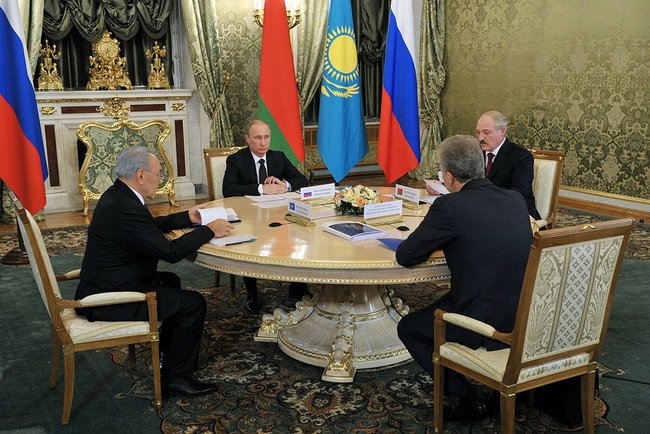
The Eurasian Economic Union (EEU) officially starts functioning on January 1.
The EEU unites Russia, Belarus, Kazakhstan, Armenia, and Kyrgyzstan.
The new economic union envisages free flow of capital, goods services, and workforce on a common market including over 170 million people, according to reports of the Bulgarian National Radio.
The union operates through supranational and intergovernmental institutions.
The supranational institutions are the Eurasian Commission (the executive body), the Court of the EEU (the judicial body) and the Eurasian Development Bank.
National governments are usually represented by the Eurasian Commission’s Council.
The constituent states of the EEU are placed under binding laws and have equal representation within the union’s executive and judicial bodies.
The Eurasian Commission will be headquartered in Moscow, the Eurasian Economic Union Court in Minsk and the financial regulator in Almaty.
The treaty on the EEU, which came into effect on January 1, 2015, was signed by the presidents of Kazakhstan, Belarus and Russia on May 29, 2014.
The presidents of Armenia and Kyrgyzstan also attended the signing ceremony.
Treaties aiming for Armenia’s and Kyrgyzstan’s accession to the Eurasian Economic Union were signed on October 9, 2014 and December 23, 2014, respectively.
Armenia’s accession treaty will come into force on January 2, 2015.
Although Kyrgyzstan’s accession treaty will not come into force until May 2015, provided it has been ratified, it will participate in the EEU from the day of its establishment as an acceding state.




